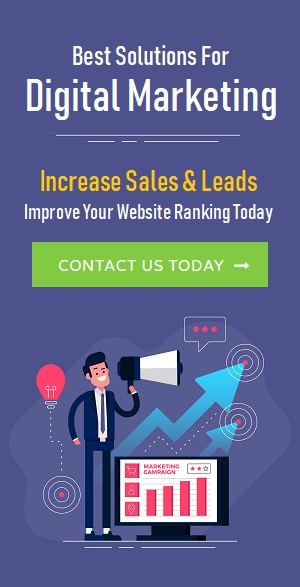It’s likely that you’ve thought about ecommerce SEO once or twice as you strive to get more traffic to your online store.
Getting consistent, high-quality traffic for free? Yes, please.
It can be challenging to get a handle on search engine optimization because of constant algorithm updates and excessive industry jargon.
You will be taken from novice to newbie with the help of this beginner’s guide.
The topics we’ll cover are keyword research, site structure, and on-page SEO.
Chapter 1. Learn Shopify SEO
Chapter 2. Researching Keywords
Chapter 3. Ecommerce Site Structure
Chapter 4. Link your stores to other websites
Chapter 5. On-Page SEO
Chapter 6. Marketing content
Getting SEO right from the very beginning steps takes a lot of effort – but once you are ranking, you can relax and enjoy passive income with no recurring costs.
Let’s start learning about it more in-depth.
Chapter 1: Learn Shopify SEO
Shopify SEO vs. regular SEO?
In terms of principles and basic rules, they are similar. There are also three categories of Shopify SEO tactics that are used by dynamic SEO solutions:
a)- On-Page SEO:
The goal of on-page SEO is to optimize your content for search engines by making it friendly and useful for your target audience; and optimizing your headings, tags, and links to be search engine friendly as well.
b)- Off-Page SEO:
Off-page SEO refers to all activities conducted on another site or platform, such as Link Building, Social Media, Local Citations, and Landing Page Reviews.
c)- Technical SEO:
Technical SEO includes all actions that determine whether search engines index your Shopify store, such as: site speed optimization, structured data, canonicalization, and hreflang.
Chapter 2: Researching Keywords
Once you know what is seo, you can move forward to the next step, that is researching the right keywords.
It shouldn’t come as a surprise that one of the first steps you should take is to identify those high-value search terms that your potential customers might be using in their search queries.
As a result, there are a number of ways in which you can conduct keyword research in order to achieve that goal.
There’s no need to invest in fancy tools when you can simply take help of reliable local SEO solutions to identify and create a list of at least five main topics that are of interest to your customers and closely related to your product. That’s the best way to get started.
Think from your customers’ perspective. To find your products, what search terms would you use?
Other sources of inspiration include:
● Personas of your own buyers
● Identify relevant forums and subreddits
● Product-related social media hashtags
● Analyze the title, meta description, and alt-text of your competitors’ websites
You can expand your keyword list with these keyword research tools.
Chapter 3: Ecommerce Site Structure
Start with getting to know how to do SEO as your search engine ranking is affected by the organization and structure of your website.
Your user experience (UX) is also affected by it.
Search engines and actual visitors both want to be able to find items in your store easily.
In theory, it should be easy, but in practice, it isn’t.
A site’s structure becomes complex as it adds and removes categories and products.
It is suggested to hire professional shopify SEO solutions to get this right from the start, you’ll save yourself tons of time later on. As a result,
● Scalability is important when your store grows.
● Reach every page with as few clicks as possible.
Visitors shouldn’t have to switch between your website and their search engine constantly.
Your site structure shouldn’t change when you add a product category.
Your homepage has the most traffic, right? It follows that a product page’s authority will decrease the farther it is from the homepage.
Chapter 4. Link your Store to Other Websites
With effective off Page SEO solutions, the value of your site will be maintained as it is determined by the number of backlinks that your site has.
Consider it SEO’s word of mouth.
Establishing credibility and trustworthiness is the key to off-page optimization.
What is the most effective way to get links? Some tips:
1. Suppliers/Manufacturers
Some established companies will allow authorized retailers to get links if they make or supply the products you sell.
Your store can be linked by emailing them.
2. Influencers/Industry Voices
Create content and links by interviewing industry leaders and influencers.
3. Recommendations
Here you’ll get to know is SEO still relevant as it helps you in getting more recommendations.
It is possible that you have already been mentioned in several places without being linked.
These mentions can be found using mention.com. Ask them to link to your site by sending an email.
4. 404 Not Found
Identifying broken links for services and products similar to your own requires some detective work.
Get the site owner to link to your site instead of the broken link once you find one.
It’s a mutually beneficial solution; they get to fix a broken link, you get a link back.
Chapter 5. On-Page SEO
Identify do you really need seo once you’re done.
For your website it is necessary to understand how more advantages can benefit you with the help of SEO.
Let’s talk about optimizing your two highest value pages:
● Pages with product categories.
● Page of products.
With Shopify, you can take advantage of some built-in SEO features.
You will need to optimize some features, however:
● Keywords can be added to title tags and meta descriptions.
● Your keywords can be included in the alt text for images.
● Your keywords can be included in your file names.
● Products, collections, blog posts, and webpages can all have their own URLs.
Understand does seo really work? And if yes, then how.
You should keep in mind that Google will look at your title tags and descriptions when optimizing them.
Ranking on the first page is the first step.
Second, you need to convince searchers to visit your website.
1. Meta Title and Description Optimization
Get to know how to hire seo experts to get the best results. As they work with their tactics to make your titles and descriptions interesting.
On the other hand, if you are on a product or collection page, click “Edit website SEO,” and then click “Edit meta information.”
When writing titles and descriptions, keep these ideas in mind:
● Keywords should be included
● Variations with long tails should be added
● The title should not exceed 50-60 characters
● 120 characters is a good length for descriptions
● Provide your USPs
● Your snippets will be more compelling if you follow the advice above.
2. Define Categories and Products in a Unique Way
Take help of skillful content writing solutions for getting an unique description for each page that helps users and search engines learn more about the page.
A certain category of products may be described the same way in some stores because they cut corners.
It’s not a good idea to make that mistake.
Rankings are hindered by duplicate content.
To write the perfect description, follow these tips:
● Describe products in a way that addresses visitors’ possible questions
● Visitors care about what you say
● Simplify your language
● Keywords should not be shoehorned in
Become familiar with is seo affordable for your website and prioritize your most important pages since writing unique descriptions for each takes time.
3. Image Optimization
A good place to start when optimizing images is with alt text (alternative text).
This information is useful to screen readers and search engines.
You can add alt text to any image in Shopify by clicking “Add alt text”:
Chapter 6. Marketing Content
An e-commerce store’s content marketing opportunities are some of the best in the world of Shopify SEO.
It is your content that drives people to your site.
It is possible to consider product descriptions as sufficient content as an eCommerce site owner.
Writing can be overwhelming, but it doesn’t have to be.
Identify all the questions your customers ask you and anything else you think customers might want an answer to.
Answers to real questions, not product information.
With your content, you can introduce your brand to customers and potential customers without selling them anything.
The best way to rank for more keywords and get more backlinks is to use this strategy.
Conclusion
As this is an ultimate guide, we’ve tried to include as many learning points as possible, but as SEO is huge, we never know when Google will update.
Creating high-quality content and a stellar page experience are your go-to advanced steps if you are new to building your Shopify store and don’t have the budget for SEO.
Google loves a positive user experience, as we have consistently said throughout the blog.
But if your eCommerce site needs expert help, we’re here for you.
Give us a call at +91-9205356986 or mail us at info@linkbuildingcorp.com
Never miss a story..!!
Grab the Latest link building, seo, content News, Tips, Updates & Trends..!!
Want to Level Up your SEO Skills? then must read Learn SEO for Beginners & Google Algorithm Updates


